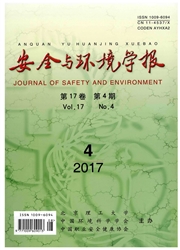

 中文摘要:
中文摘要:
近年来随着人们对热污染问题的重视,需要预测和评估电厂冷却水对受纳水体的影响。针对武汉阳逻电厂四期扩建工程,应用基于曲线网格的平面二维水动力水温数学模型,对冷却水出流后的流场及温度场进行了预测,给出了工程热污染影响范围。在此基础上提出了降低电厂冷却水热污染影响的两点建议,即在工程允许范围内可适当降低长河出口河床高程,同时长河出口平均河宽在130m对减小热污染影响是有利的。
 英文摘要:
英文摘要:
This paper is aimed at presenting its authors' newly innovated numerical simulation of cooling water by taking Yangluo Thermal Power Plant as a case study. As a matter of fact, thermal power constitutes an important part in energy in China. It brings us huge economic benefits, but it has also brought us much negative influence, for its cooling water tends to cause thermal pollution in the adjacent waters, leading to harm to human health directly or indirectly. Therefore, it is of great need for us to predict and evaluate how the cooling water affects the water body. Coming from this need, this paper has worked out a simulated Stage-Ⅳ Extension Project of Yangluo Power Plant with 2-D horizontal hydrodynamic and temperature numerical model based on the curvilinear grids. The finite element calculation method has also been used for discrediting the control equations while the SIMPLING method is used for getting the water correction equa- tion. The above said model is calibrated and verified by the field data beth in hydrology and temperature of the water of Yangluo River, Wuhan. The comparison between the calculated and the measured data proves in great conformity with each other, which shows the feasibility and effectiveness of the mathematical model and the calcula- tion method. And, then, the flow and temperature fields are forecast with the pollution range given. And, last of all, two suggestions have been proposed to reduce the pollution impact, namely, reduce the river bed elevation at the outlet properly within project permission. Since the reduction of river width is favorable in some degrees, the mean width at the outlet of Changhe River is suggested to 130 m. The analysis and computation results here provided can be taken as the reference value to other similar projects.
 同期刊论文项目
同期刊论文项目
 同项目期刊论文
同项目期刊论文
 期刊信息
期刊信息
